everything explained for the professional pilot pdf
Welcome to the Professional Pilot Guide, your comprehensive resource for aviation training and career development. This guide provides detailed insights into pilot training programs, FAA/ICAO resources, and essential flight techniques to help aspiring pilots achieve their goals.
Overview of the Professional Pilot Program
The Professional Pilot Program is a structured, comprehensive training pathway designed to equip aspiring pilots with the necessary skills and knowledge to pursue a successful aviation career. It combines rigorous ground school education with practical flight training, ensuring a well-rounded understanding of aviation principles, safety protocols, and operational procedures. The program typically includes phases such as primary aircraft training, advanced flight maneuvers, and multi-engine certification. Students also gain insights into FAA and ICAO regulations, weather navigation, and aircraft systems. The curriculum is tailored to meet both FAA Part 61 and 141 requirements, preparing pilots for commercial and airline careers. Additional resources like the Pilot’s Handbook of Aeronautical Knowledge and continuous learning tools support students throughout their journey.
Importance of Comprehensive Training Materials
Comprehensive training materials are essential for professional pilots, providing a solid foundation for aviation knowledge and skills. These resources, such as the Pilot’s Handbook of Aeronautical Knowledge and Flight Training Guides, cover critical topics like aircraft systems, weather, navigation, and regulations. They ensure pilots understand both theoretical and practical aspects of flying, enabling safe and efficient operations. Additionally, these materials are regularly updated to reflect the latest industry standards and technologies, ensuring pilots remain current and compliant with FAA and ICAO requirements. Access to high-quality training materials is crucial for building confidence and competence, ultimately leading to successful flight operations and career advancement in aviation.

FAA and ICAO Resources for Professional Pilots
The FAA and ICAO provide essential resources for professional pilots, including the Pilot’s Handbook of Aeronautical Knowledge and the Aeronautical Information Manual (AIM).
These resources ensure compliance with global aviation standards and support continuous learning for safe and efficient flight operations.
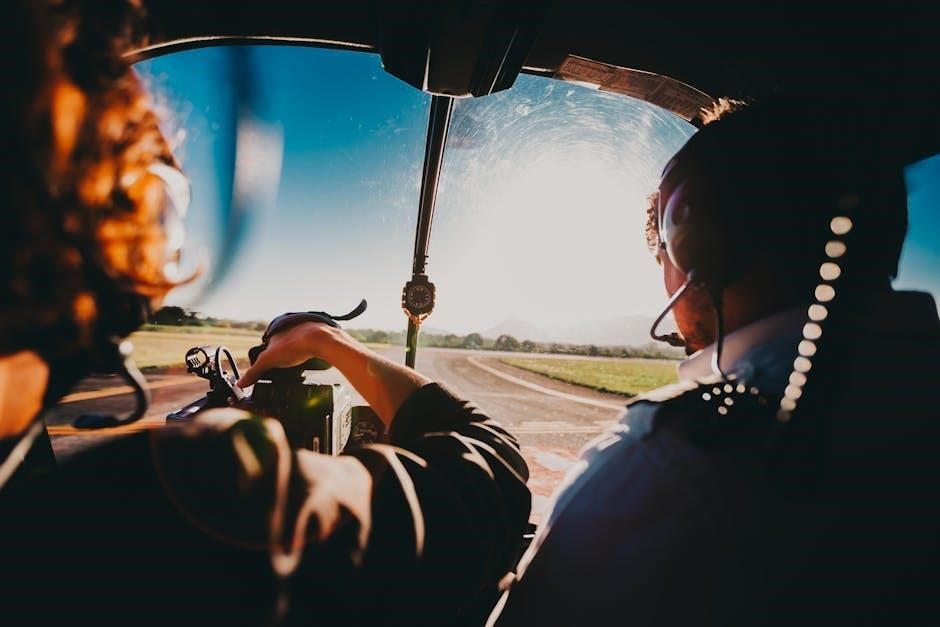
Pilot’s Handbook of Aeronautical Knowledge
and Aircraft Structure to build a strong knowledge base. This comprehensive guide is regularly updated to reflect the latest advancements in aviation, ensuring pilots stay informed and compliant with global aviation standards. It is an indispensable tool for both initial training and continuous learning in a pilot’s career.
Flight Standards and Testing Materials
Flight standards and testing materials are critical for professional pilots to ensure compliance with FAA and ICAO regulations. These resources include detailed guides, manuals, and study aids to prepare for certification. The Aeronautical Information Manual (AIM) is a key reference, offering insights into flight procedures and safety protocols. Additionally, testing materials such as practice exams and study guides help pilots assess their knowledge and readiness for certification. These tools are designed to align with the structured curriculum of professional pilot programs, ensuring pilots meet the highest standards of aviation competency. Regular updates to these materials reflect the evolving nature of aviation, keeping pilots informed and prepared for their careers.
Airman Training and Certification Requirements
Airman training and certification requirements are meticulously structured to ensure pilots meet rigorous aviation standards. The FAA outlines specific criteria for obtaining professional pilot certifications, including ground school, flight hours, and practical exams. These requirements are detailed in resources like the Aeronautical Information Manual (AIM) and the Pilot’s Handbook of Aeronautical Knowledge. Training programs are divided into phases, such as primary aircraft training and advanced flight maneuvers, to build a strong foundation for pilots. Understanding these requirements is essential for navigating the certification process successfully. Additionally, continuous learning and adherence to updated regulations are emphasized to maintain competency and safety in the aviation industry.
Flight Training Curriculum for Professional Pilots
The curriculum combines ground school, flight simulations, and practical training to build a strong aviation foundation, ensuring pilots master essential skills and safety protocols effectively.
Ground School Training and Procedures
Ground school is the cornerstone of pilot training, covering essential topics like weather, navigation, regulations, and aircraft systems. Structured lessons ensure a thorough understanding of aviation principles, while interactive sessions enhance learning. Instructors use real-world scenarios to prepare students for practical challenges. The curriculum aligns with FAA and ICAO standards, ensuring compliance and safety. Regular assessments and progress tracking help identify areas for improvement. Ground school lays the foundation for flight training, equipping students with the knowledge needed to excel in the cockpit. This phase is critical for building confidence and a strong theoretical base for future flight operations.
Primary Aircraft Training Phases
The primary aircraft training phases are designed to build foundational flying skills. Initial training focuses on basic flight maneuvers, such as takeoffs, landings, and navigation. Students progress to more complex operations, including emergency procedures and systems management. Each phase is structured to ensure mastery before advancing, with hands-on experience in aircraft like the T-6. Instructors guide students through approximately 90 hours of flight instruction, emphasizing safety and precision. This phase also includes track selection, where students are matched to specific aircraft based on aptitude and performance. The goal is to create a solid foundation for advanced training, preparing pilots for the demands of professional aviation careers.
Advanced Flight Maneuvers and Techniques
Advanced flight maneuvers and techniques are critical for professional pilots to master. These include aerobatic exercises, emergency procedures, and complex aircraft handling. Students learn stall and spin recovery, advanced navigation, and multi-engine operations. Instrument flying under IFR conditions is emphasized, preparing pilots for real-world scenarios. Techniques such as precision landings, circling approaches, and asymmetric flight are also covered. These maneuvers enhance situational awareness, decision-making, and adaptability, ensuring pilots can handle challenging conditions safely and effectively. The training culminates in a high level of proficiency, equipping pilots with the skills needed for commercial aviation careers.

Professional Pilot Program Structure
The program offers structured learning paths, including Associate of Applied Science degrees in aviation, specialized training for airplanes, helicopters, and unmanned aircraft, with detailed cost breakdowns.
Associate of Applied Science Degrees in Aviation
The Associate of Applied Science (AAS) degrees in aviation are designed to provide students with a comprehensive understanding of aircraft operations, safety protocols, and industry standards. These programs typically include specialized tracks such as Airplane, Helicopter, and Unmanned Aircraft Systems, catering to diverse career aspirations. The curriculum combines theoretical knowledge with practical flight training, ensuring graduates are well-prepared for professional pilot roles. Courses cover topics like aircraft systems, weather, navigation, and federal aviation regulations.
Many institutions, such as the Community College of Baltimore County (CCBC), offer these degrees with a focus on real-world applications. The program structure is tailored to meet FAA requirements, with options for transferring previous college credits on a case-by-case basis. This ensures a seamless transition for students with prior academic or flight experience, making the AAS in Aviation a versatile and career-focused choice.
Specializations: Airplane, Helicopter, and Unmanned Aircraft
Professional pilot programs offer specializations in Airplane, Helicopter, and Unmanned Aircraft Systems (UAS), catering to diverse career goals. Airplane tracks focus on fixed-wing aircraft, preparing students for roles in commercial aviation. Helicopter specializations emphasize rotorcraft operations, ideal for roles in rescue, medical evacuation, and specialized lifting. UAS programs address the growing demand for drone pilots in surveillance, mapping, and delivery. These pathways align with industry needs, ensuring graduates are equipped for their chosen field. Each specialization includes tailored training, ensuring a strong foundation in aircraft-specific systems and operations. This structured approach helps aspiring pilots navigate their career paths effectively, whether in manned or unmanned aviation sectors.
Program Costs and Additional Flight Hours
Program costs for professional pilot training vary based on factors like location, aircraft type, and training hours. Typical expenses include flight lab fees, aircraft rental, and instructional costs. For example, a Cessna 172 dual training session may cost around $200 per hour, with programs requiring 30-40 such hours. Additional flight hours are often necessary to meet certification requirements, especially for multi-engine or instrument ratings. These extra hours can significantly increase overall costs. Institutions like CCBC offer structured payment plans and scholarships to help manage expenses. It’s crucial for aspiring pilots to budget for both program fees and potential additional training to ensure they meet all FAA requirements and achieve their certification goals effectively.
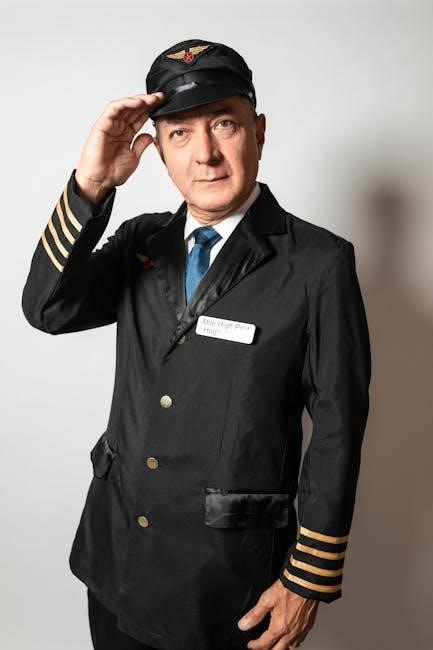
Flight Training Courses and Labs
Flight training courses and labs provide hands-on experience, combining theoretical knowledge with practical skills. These structured programs ensure pilots master aircraft operations, safety protocols, and advanced maneuvers efficiently.
Single Engine Instrument Rating Requirements
To obtain a Single Engine Instrument Rating, pilots must meet specific FAA requirements, including a minimum of 50 hours of cross-country flight time as pilot-in-command. Additionally, 15 hours of flight training with an authorized instructor in a single-engine aircraft are mandatory. This includes 3 hours of night flight training and one cross-country flight of at least 5 hours. Instrument rating candidates must also pass a written exam and a practical test, demonstrating proficiency in instrument meteorological conditions. The training emphasizes navigation, weather interpretation, and emergency procedures. These requirements ensure pilots are prepared to operate safely in instrument flight rules (IFR) conditions, enhancing their aviation career prospects.
Multi-Engine Training and Certification
Multi-engine training focuses on the unique characteristics of aircraft with multiple engines, emphasizing engine management and asymmetric thrust scenarios. Pilots learn to handle engine failures and execute emergency procedures effectively. Ground school covers aerodynamic principles and system operations, while flight training involves simulated engine failures and single-engine operations. Certification requires a practical test with a FAA inspector, demonstrating proficiency in both normal and emergency conditions. This training is crucial for advancing to commercial aviation roles, as it builds on single-engine skills and prepares pilots for more complex aircraft. The multi-engine rating is a key step toward professional pilot certification, enhancing career opportunities in airlines and corporate aviation;
Lab Fees and Practical Training Components
Lab fees are essential for practical flight training, covering aircraft usage, simulator sessions, and instructor costs; These fees vary based on the aircraft type and training phase. Practical training includes hands-on flight hours, where pilots apply ground school knowledge. Students log flight hours in single-engine and multi-engine aircraft, practicing maneuvers, navigation, and emergency procedures. Simulator sessions mimic real-world scenarios, enhancing safety training. Lab components also include pre-flight and post-flight briefings, ensuring thorough understanding of each exercise. These practical elements are crucial for developing the skills needed for certification and career success. Lab fees are typically separate from tuition, ensuring access to high-quality training resources.
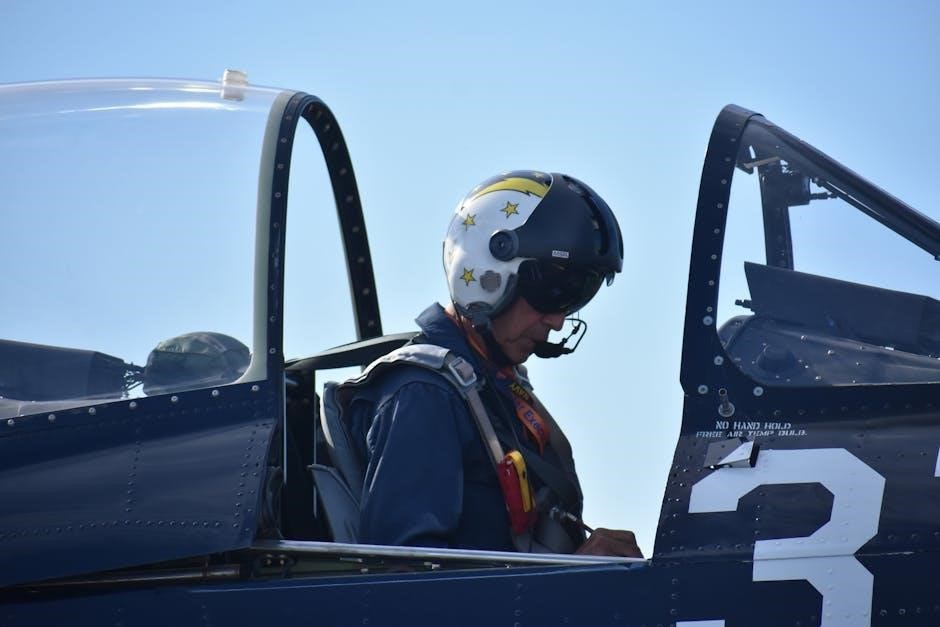
Education and Training Institutions
Leading aviation schools offer comprehensive pilot programs, combining ground school with practical flight training. Institutions like CCBC provide structured curricula and experienced instructors for professional pilot development.
Community College of Baltimore County (CCBC) Programs
CCBC offers three Associate of Applied Science degrees in aviation: Airplane, Helicopter, and Unmanned Aircraft Systems. These programs are designed to provide students with the necessary skills and knowledge to become professional pilots. The curriculum includes both ground school and flight training, ensuring a well-rounded education. With experienced instructors and state-of-the-art facilities, CCBC prepares students for successful careers in aviation. The programs are structured to meet FAA requirements, ensuring graduates are fully prepared for certification and employment opportunities in the aviation industry.
Duration and Completion of the Professional Pilot Program
The Professional Pilot Program at CCBC is designed to be completed in three semesters, assuming prior college credit has been awarded. This timeframe allows students to progress through ground school, primary flight training, and advanced maneuvers efficiently. The program’s duration may vary based on individual performance, flight hours accumulated, and the student’s ability to meet FAA certification requirements. Completion is determined on a case-by-case basis, with prior credits evaluated to streamline the process. The structured curriculum ensures students gain the necessary skills and knowledge to succeed in their aviation careers, with a focus on both theoretical and practical training.
Case-by-Case Basis for Previous College Credit
Previous college credits are evaluated on a case-by-case basis to determine their applicability to the Professional Pilot Program. Institutions like CCBC assess transcripts to identify relevant coursework that aligns with aviation requirements. Credits from prior degrees or certifications may be transferred, potentially shortening the program duration. This evaluation ensures students are not redundant in their studies, allowing them to focus on advanced training. The process is designed to accommodate diverse academic backgrounds while maintaining program standards. By tailoring the curriculum to individual needs, the program maximizes efficiency and supports students in achieving their aviation goals effectively.
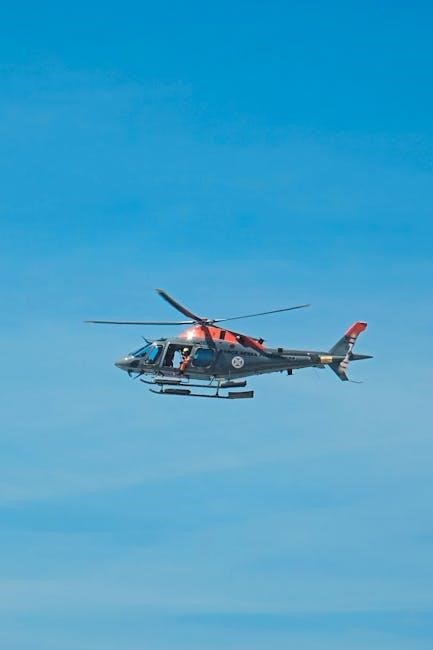
Additional Resources for Professional Pilots
Explore the CAE Professional Pilot Training App, offering guided and free-mode learning. Utilize flight training guides and manuals for enhanced study and practical application.
CAE Professional Pilot Training App
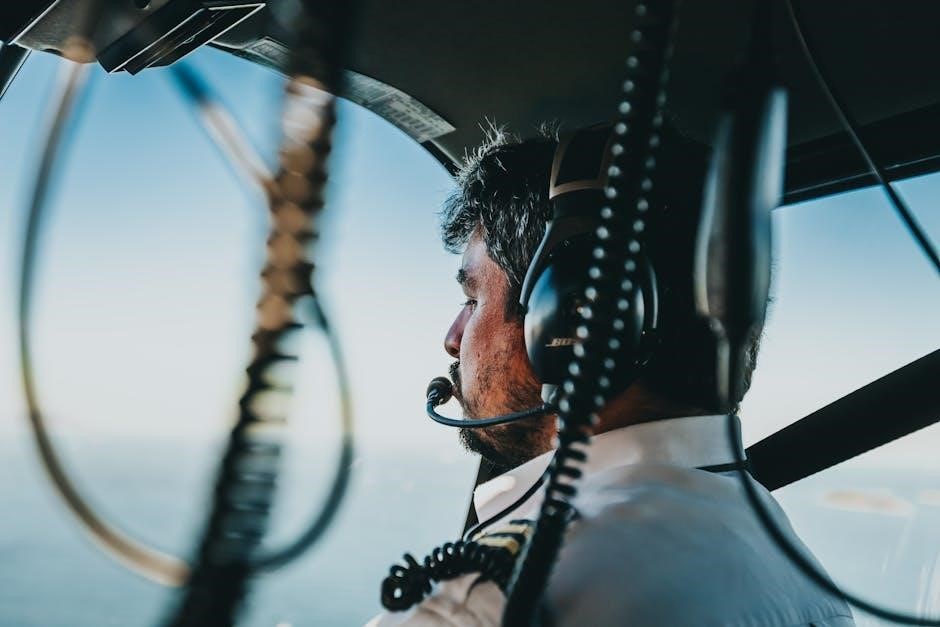
The CAE Professional Pilot Training App is a cutting-edge tool designed to enhance aviation training. It offers two modes: Guided Mode, which walks users through aircraft procedures step-by-step, and Free Mode, allowing pilots to explore systems at their own pace. The app is compatible with advanced devices like Vision Pro, ensuring immersive learning experiences. It covers essential topics such as aircraft systems, navigation, and emergency procedures, making it a valuable resource for both new and experienced pilots. Regular updates ensure the content stays current with industry standards, providing users with the most relevant training materials.
Guided and Free Mode Learning Features
The CAE Professional Pilot Training App offers two distinct learning modes tailored to different training needs. In Guided Mode, users follow structured lessons that guide them through aircraft procedures systematically, ensuring a thorough understanding of each step. This mode is ideal for newcomers, as it provides clear, step-by-step instructions. Conversely, Free Mode allows experienced pilots to explore aircraft systems and procedures independently, enabling self-paced review and in-depth study. These modes cater to various learning preferences, making the app versatile for both initial training and advanced skill refinement. The combination of structured guidance and flexible exploration ensures comprehensive learning, enhancing overall aviation knowledge and operational proficiency.
Flight Training Guides and Manuals
Flight training guides and manuals are essential resources for professional pilots, providing detailed information on aircraft operations, procedures, and safety protocols. The FAA’s Pilot’s Handbook of Aeronautical Knowledge and Aircraft Flying Handbook are cornerstone materials, covering topics from basic flight mechanics to advanced maneuvers. Additionally, the Aeronautical Information Manual (AIM) offers critical guidance on airspace, weather, and navigation. These manuals are supplemented by training materials for specific certifications, such as the Commercial Pilot certificate, ensuring comprehensive preparation for FAA and ICAO standards. Regular updates and digital accessibility make these resources indispensable for both initial training and ongoing professional development, ensuring pilots stay current with industry requirements and best practices.
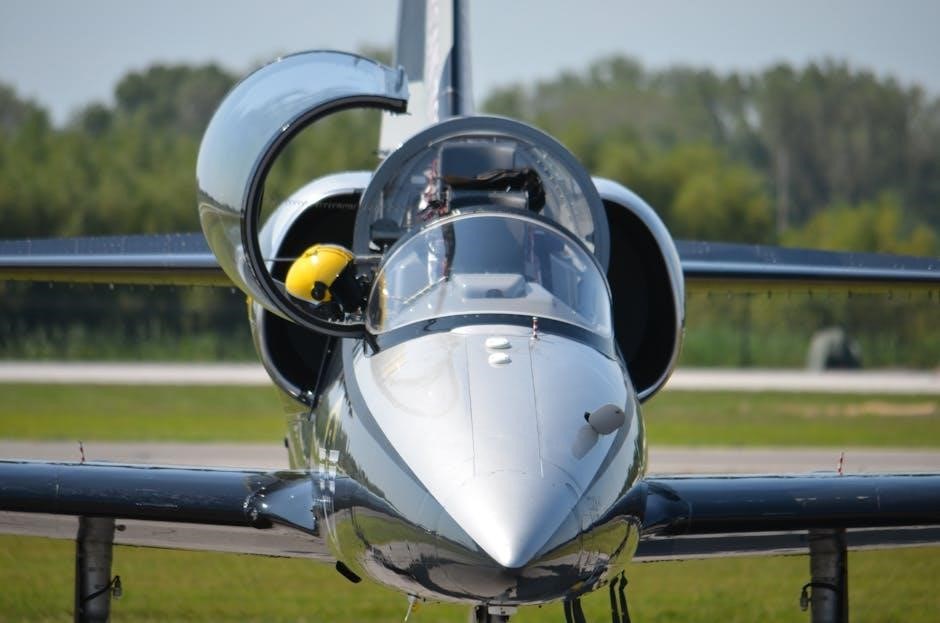
Flight Training Process and Materials
A structured process with essential materials ensures comprehensive preparation, integrating FAA resources, study guides, and continuous learning for professional pilots.
Steps to Earn a Professional Pilot Certificate
Earning a professional pilot certificate involves a structured process. First, meet eligibility requirements, including age and medical certification. Complete ground school, covering aviation regulations, weather, and navigation. Log required flight hours, including solo and cross-country flights; Pass the FAA knowledge test and practical flight exam. Stay updated with continuous learning and adhere to FAA guidelines. Utilize study guides and resources for thorough preparation. Ensure all training aligns with FAA Part 61 or 141 requirements. This comprehensive approach ensures readiness for a successful aviation career.
Free Study References for Flight Training
Free study references are essential for effective flight training. The FAA provides the Pilot’s Handbook of Aeronautical Knowledge and the Airman Certification Standards (ACS) as downloadable PDFs. These resources cover aviation regulations, aircraft systems, weather, navigation, and flight maneuvers. Additionally, the Aeronautical Information Manual (AIM) offers critical operational information. Ground school materials, such as The Pilot’s Manual, are available online, detailing flight procedures and safety practices. Many flight training organizations also offer free guides and manuals for specific aircraft and training phases. Utilizing these resources ensures comprehensive preparation for exams and practical flight tests, aligning with FAA standards for professional pilot certification.
Importance of Continuous Learning and Research
Continuous learning and research are vital for professional pilots to stay updated on aviation advancements and safety standards. The aviation industry evolves rapidly, with new technologies, regulations, and techniques emerging regularly. Pilots must commit to lifelong learning to maintain proficiency and adapt to changing requirements. Regular review of FAA and ICAO resources, such as the Pilot’s Handbook and Aeronautical Information Manual, ensures compliance with current standards. Additionally, engaging with flight training apps like CAE’s Vision Pro enhances knowledge retention and practical skills. Staying informed about weather patterns, aircraft systems, and emergency procedures is essential for safe and efficient flight operations. Continuous research and learning foster a culture of safety, professionalism, and excellence in aviation careers.

Career Guidance for Aspiring Pilots
Research and visit flight training organizations to understand the demands and opportunities in aviation. This guide helps determine if a pilot career aligns with your goals and interests.
Is a Career as a Professional Pilot Right for You?
Deciding if a career as a professional pilot is right for you involves assessing your passion for aviation, willingness to commit to rigorous training, and understanding the demands of the job. This guide helps you evaluate your suitability by outlining the skills, knowledge, and personal qualities required for success in this field. It also provides insights into the benefits and challenges of a pilot’s career, including financial rewards, travel opportunities, and the responsibility of ensuring safety. By exploring these aspects, you can make an informed decision about pursuing professional pilot training and whether it aligns with your long-term goals and aspirations;
Research and Visiting Flight Training Organizations
Researching and visiting flight training organizations is a critical step in choosing the right program for your professional pilot career. Start by evaluating the organization’s certifications, such as FAA Part 141 approval, and their reputation in the aviation industry. Visit the facilities to assess the quality of aircraft, simulators, and training equipment. Meet with instructors to discuss their experience and teaching methods. Additionally, speak with current students and alumni to gain insights into the program’s strengths and challenges. Observing a typical training day can also provide valuable information about the learning environment and overall structure. This hands-on approach ensures you make an informed decision aligned with your aviation goals and expectations.
Essential Knowledge for a Successful Aviation Career
A successful aviation career requires a combination of technical skills, theoretical knowledge, and practical experience. Pilots must understand aircraft systems, weather conditions, navigation, and federal aviation regulations. Strong decision-making and situational awareness are critical for safety. Effective communication with air traffic control and crew members is also vital; Additionally, staying updated on industry advancements and adapting to new technologies ensures long-term success. Building a robust foundation through comprehensive training and continuous learning is essential. This knowledge not only enhances proficiency but also contributes to a culture of safety and professionalism in aviation.
